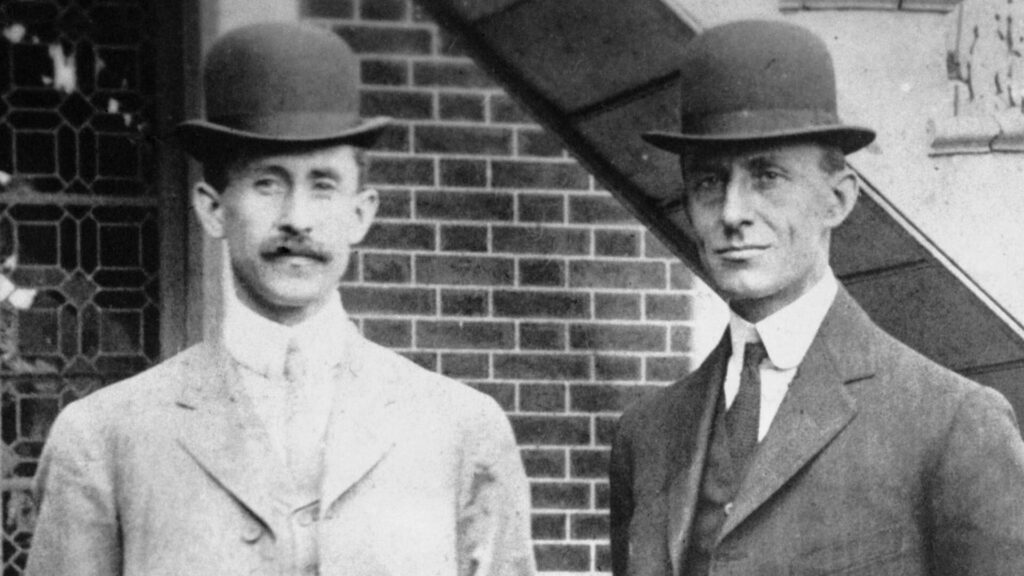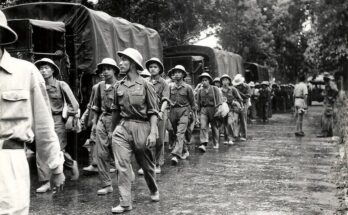
Introduction
Imagine a world where the sky was an uncharted frontier, a realm reserved for birds and dreams. In the early 20th century, this dream began to take flight, quite literally, thanks to two visionary brothers from Dayton, Ohio. Orville and Wilbur Wright, fueled by an insatiable curiosity and an unwavering determination, embarked on a quest that would forever alter the course of human history. On December 17, 1903, their groundbreaking invention—the powered airplane—soared into the air for the first time, defying gravity and igniting the imaginations of people around the globe. This moment not only marked the birth of aviation but also set humanity on a path toward conquering the skies, revolutionizing transportation, and connecting the world like never before. Join us as we delve into the remarkable journey of the Wright brothers, pioneers of flight, whose legacy continues to inspire innovation and exploration to this day.
The Wright brothers, Orville and Wilbur, are celebrated as the inventors of the first successful powered airplane, marking a pivotal moment in aviation history. Their journey to this groundbreaking achievement began in the late 19th century, rooted in their childhood fascination with flight and their skills as mechanics.

Early Life and Interests
Growing up in Dayton, Ohio, the Wright brothers were intrigued by flight from a young age. They were particularly inspired by a toy helicopter powered by a rubber band, which ignited their ambition to create a flying machine. Before venturing into aviation, they operated a printing press and a bicycle repair shop, where they honed their mechanical skills, which would later prove crucial in their aeronautical endeavors.
The Path to Flight
In 1899, the Wright brothers began their serious pursuit of flight. They chose Kitty Hawk, North Carolina, for their experiments due to its favorable winds and soft-landing surfaces. Initially, they tested kites and gliders to understand the principles of flight. Through rigorous experimentation, they developed a three-axis control system, allowing the pilot to steer and maintain equilibrium—an innovation that remains fundamental in aviation today. Their first powered aircraft, the Wright Flyer, was constructed in 1903. This aircraft featured a lightweight design and a custom-built engine, which they created with the help of their mechanic, Charles Taylor. The Flyer made its historic first flight on December 17, 1903, achieving a distance of 120 feet in 12 seconds, with Orville piloting the first flight.

Innovations and Impact
The Wright brothers’ success was not just in achieving flight but in their systematic approach to aeronautics. They utilized a wind tunnel to test various wing shapes and refined their designs based on empirical data, correcting previous misconceptions in aerodynamics. Their patented control methods, including wing-warping and a movable rudder, were revolutionary and essential for the development of future aircraft. Following their initial success, the Wright brothers continued to refine their designs, leading to the Wright Flyer II and Flyer III, which demonstrated longer and more controlled flights. Their innovations laid the groundwork for modern aviation, influencing aircraft design and control systems that are still in use today.
Legacy
The Wright brothers’ achievements transcended their initial flights; they sparked the beginning of the aerial age, inspiring future generations of aviators and engineers. Their story is not just one of invention but of perseverance, creativity, and the relentless pursuit of a dream that changed the world forever. Today, the Wright Flyer is recognized as an iconic symbol of human ingenuity and the spirit of exploration.
FAQs
1. What was the Wright Flyer?
The Wright Flyer was the first successful powered airplane, designed and built by Orville and Wilbur Wright. It made its historic flight on December 17, 1903, at Kitty Hawk, North Carolina. The aircraft featured a biplane structure, a four-cylinder gasoline engine, and wooden propellers that the brothers crafted themselves.
2. When and where did the first flight take place?
The first flight occurred on December 17, 1903, at Kitty Hawk, North Carolina. This location was chosen for its consistent winds and soft-landing surfaces, which were ideal for their experimental flights.
3. How long did the first flight last?
The first flight lasted just 12 seconds, during which the aircraft traveled a distance of 120 feet (approximately 36 meters). The Wright brothers conducted four flights that day, with the longest flight covering 852 feet (260 meters) in 59 seconds.
4. What innovations did the Wright brothers introduce?
The Wright brothers pioneered several key innovations in aviation, including:
- Wing Warping: A technique for controlling roll by twisting the wings, which allowed for better maneuverability.
- Three-axis Control System: This system enabled the pilot to control pitch, roll, and yaw, providing a more stable and controlled flight experience.
- Wind Tunnel Testing: They utilized a wind tunnel to test their designs, which was a novel approach at the time and laid the groundwork for modern aeronautical engineering.
5. What challenges did they face before achieving flight?
Before their successful flight, the Wright brothers faced numerous challenges, including:
- Engine Design: They had to design and build a lightweight engine that could provide sufficient power for flight.
- Control Issues: Developing a reliable control system to manage the aircraft’s stability and maneuverability was crucial.
- Weather Conditions: Adverse weather conditions and the rough terrain at Kitty Hawk posed additional obstacles during their testing phases.
6. What was the impact of their first flight?
The Wright brothers’ first powered flight marked the beginning of the aviation age, inspiring future innovations in aircraft design and technology. Their achievement demonstrated that controlled, powered flight was possible, leading to advancements in both military and commercial aviation, and ultimately paving the way for space exploration.
7. Is the Wright Flyer still in existence?
Yes, the original Wright Flyer is preserved and displayed at the National Air and Space Museum in Washington, D.C. After its final flight on December 17, 1903, it was damaged by a gust of wind but was later restored and has since become an iconic symbol of aviation history.
Read Related Post
Atomic Bomb: Weapon of Massive Destruction


